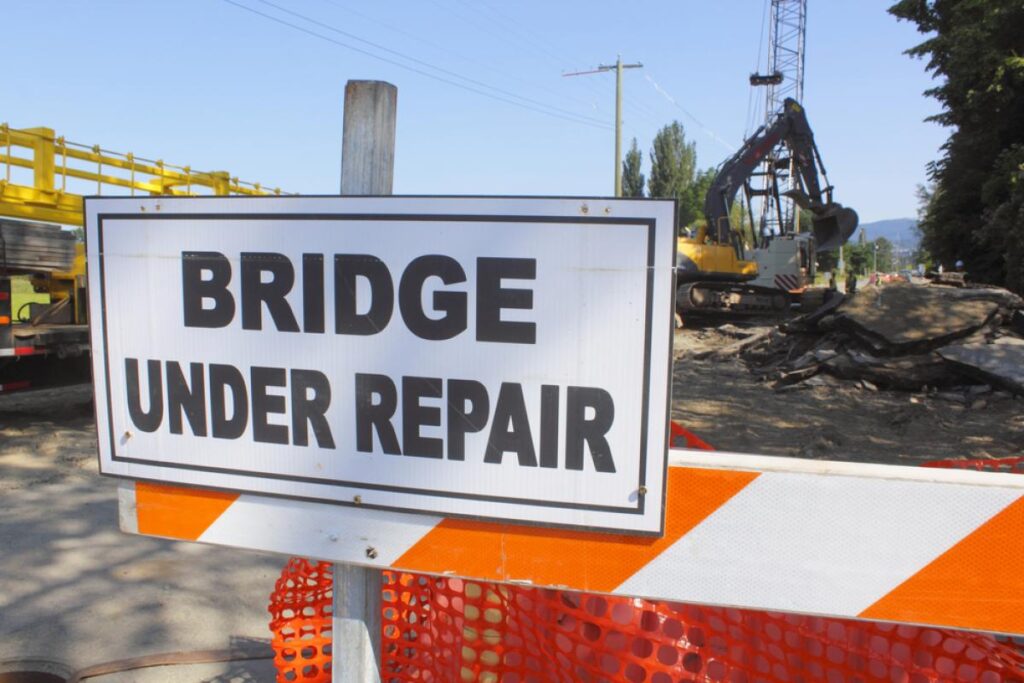About 20 months after Pittsburgh closed the Charles Anderson Memorial Bridge in the city’s Oakland neighborhood — and just days after the closure of another Oakland bridge — a major portion of the rehabilitation project is scheduled to begin soon.
Pittsburgh municipal officials closed the historic Charles Anderson span in February 2023, citing safety concerns and inspection reports that determined the bridge needed repairs.
At the time, the city had estimated those repairs would take about four months to be completed, but further inspections showed the need for more overhauls than initially anticipated.
During the same time frame, the Post-Gazette reported Oct. 22 that disputes over where the funding for the rehabilitation would come from pushed Mayor Ed Gainey and his administration to lobby the Southwestern Pennsylvania Committee and the Pennsylvania Department of Transportation (PennDOT) to move the Charles Anderson structure higher up the list of bridges that needed repairs.
“Getting that money moved forward was monumental,” Pittsburgh City Councilwoman Barb Warwick said Oct. 21 at a ceremonial groundbreaking for the project.
Some aspects of the construction have already started, she noted, but those have not been visible. Soon, however, work on the span’s road deck will begin.
Since its closure, the Charles Anderson bridge has remained open to pedestrians, but starting Nov. 4, the structure will be closed entirely as construction on the top of the bridge begins, according to Eric Setzler, chief engineer of the city’s Department of Mobility and Infrastructure.
When it was open, the bridge daily carried about 21,200 cars, trucks and buses across the Junction Hollow ravine via the Boulevard of the Allies. All of that traffic has had to navigate a new route around Oakland, which has been further complicated by the recent closure of the Panther Hollow Overpass, located less than half-mile away from the Charles Anderson bridge.
“It certainly makes it challenging to drive through Schenley Park right now,” explained Setzler.
At 780 ft. long and 58 ft. wide, the four-lane steel deck truss Charles Anderson bridge has three spans. It was first opened to traffic in 1940.
Its rehabilitation is expected to cost around $56 million and be completed by spring 2026. When it reopens, the bridge will include widened sidewalks and a bike lane.
“In this city, we can’t get [anywhere] without bridges,” Gainey said at the groundbreaking.
Pittsburgh-based Mosites Construction & Development Co. is the project’s prime contractor. SAI Consulting Engineers, also with an office in Pittsburgh, is leading the construction management and inspection team at the bridge site.
Critical Overpass Nearby Undergoing Scrutiny
The Pittsburgh mayor was just days into his administration when the Fern Hollow Bridge collapsed in January 2022, prompting a citywide review of all its bridges. Since that incident, the city has made strides to improve the quality of its bridges and Gainey told the Post-Gazette that the closure of the Panther Hollow Overpass was due to “an abundance of caution.”
That structure was rated as being in fair condition in a 2022 report from Larson Design Group (LDG), an engineering firm in Pittsburgh. The company was contracted to perform bridge inspections by the city and in its updated analysis of the overpass, LDG “had some concerns,” Setzler told the newspaper.
Those concerns came while the firm was doing an analysis on the Panther Hollow Overpass’s steel trusses, although Setzler cautioned that the city did not yet have many details on the findings. He added that LDG is continuing to perform its analysis of the bridge.
The Panther Hollow Overpass is ancient by modern bridge standards as it was erected in 1896. Setzler told the Pittsburgh news source that he believed the last rehabilitation on the structure was completed in 1999.
The overpass was less frequently used than the Charles Anderson Bridge but was a key detour route for people in the Oakland neighborhood. The Post-Gazette noted that even the Oct. 21 groundbreaking ceremony at the Charles Anderson rehab site was partially delayed because some attendees struggled to navigate around the closed bridges in that part of Pittsburgh.
Gainey said he understood that some people would likely be frustrated at the additional congestion on Forbes Avenue and increased travel time for people following the detours.
“But the number one thing is that the bridge is going to be fixed,” he promised. “There will be a temporary inconvenience, but the reality is we don’t have to wake up and wonder if a bridge is going to fall.”
Read the full article here

